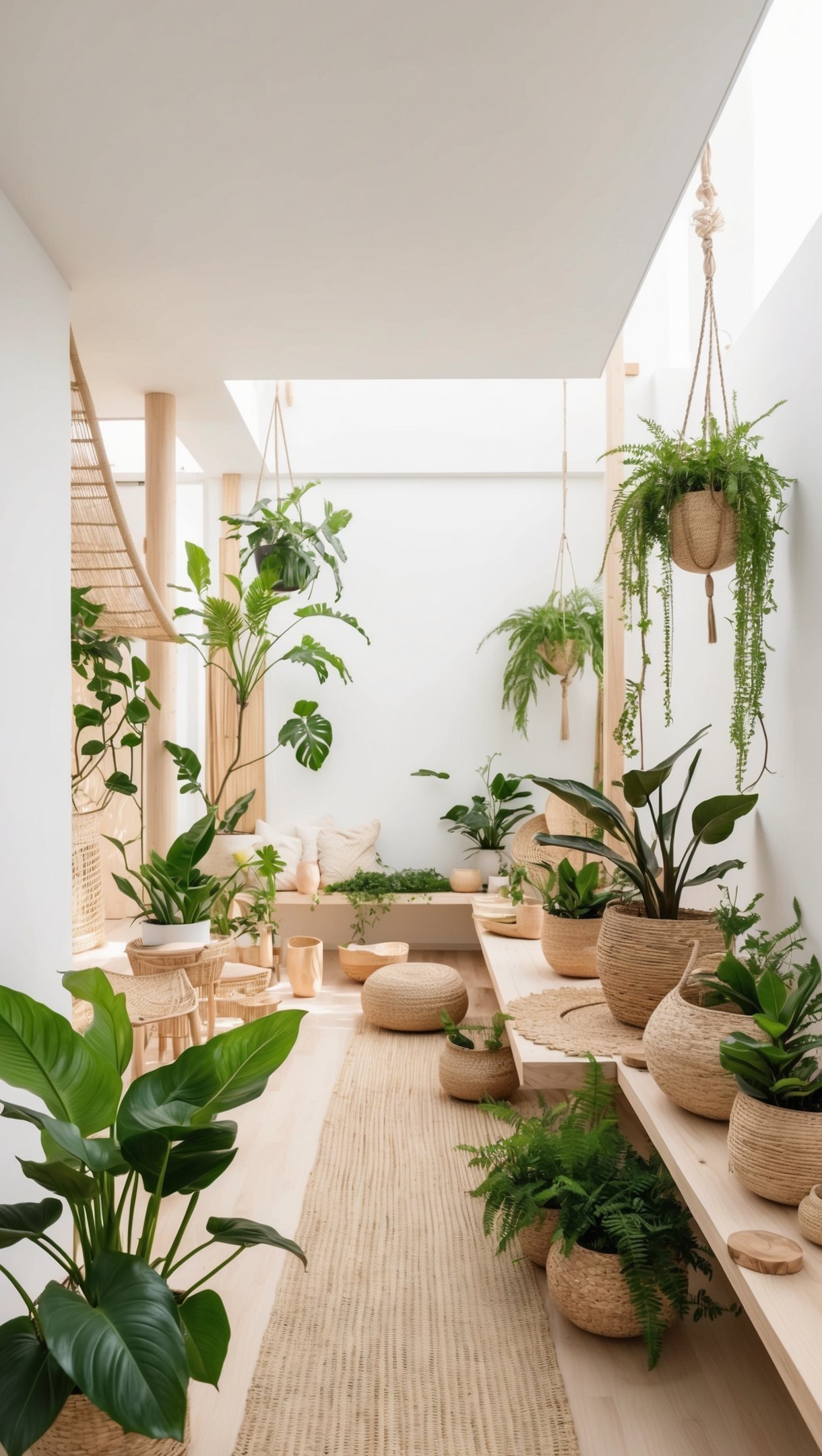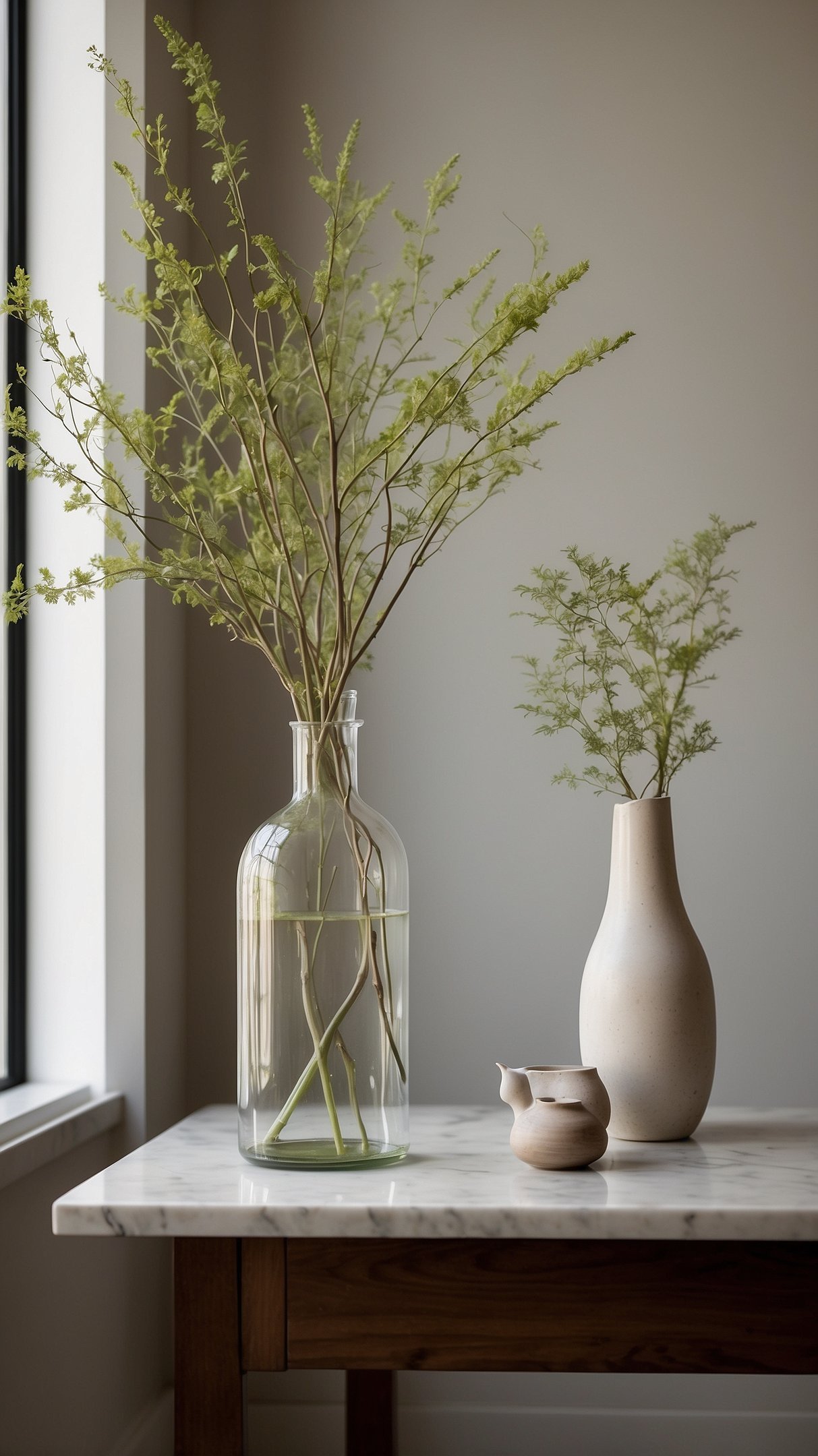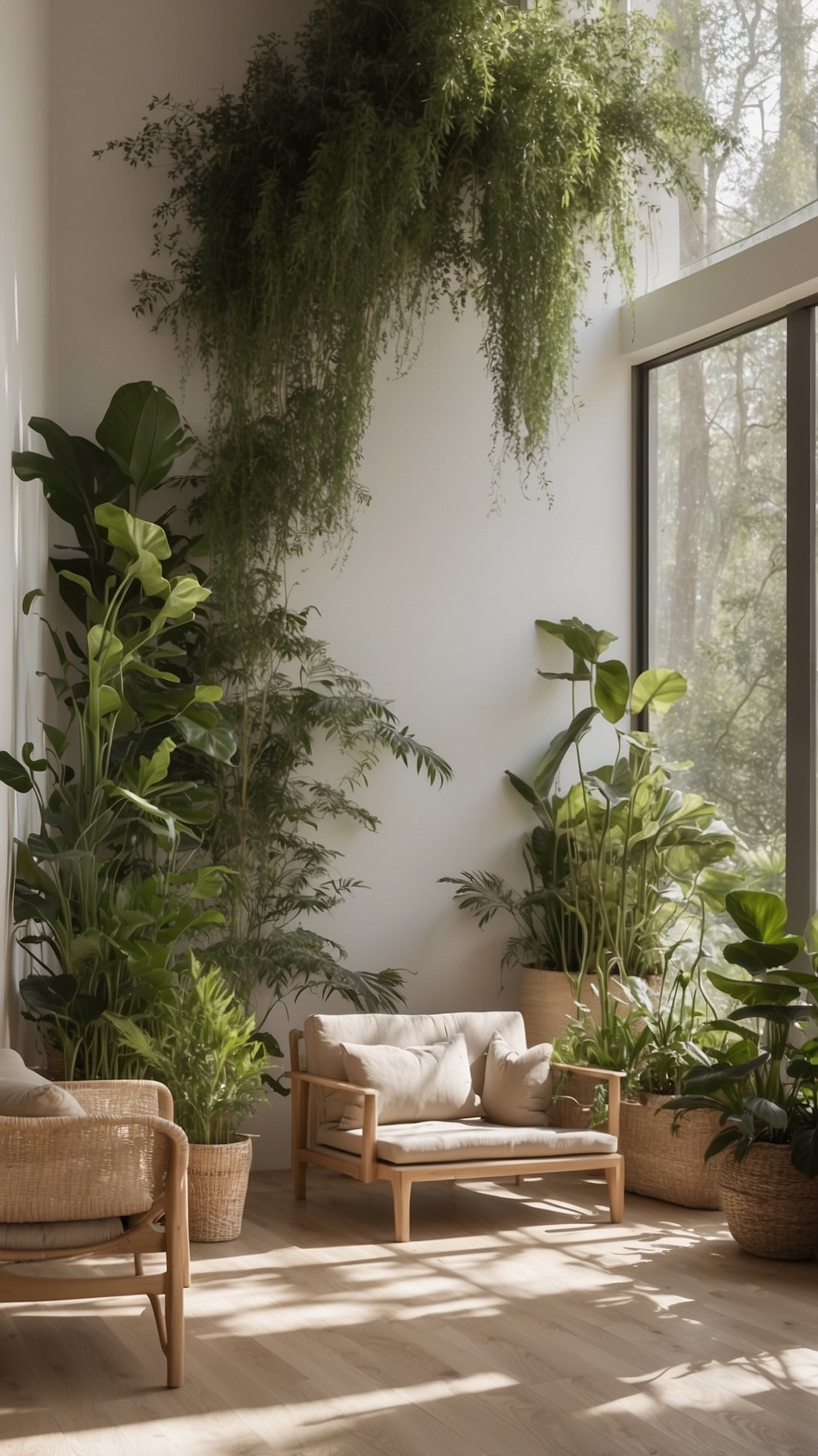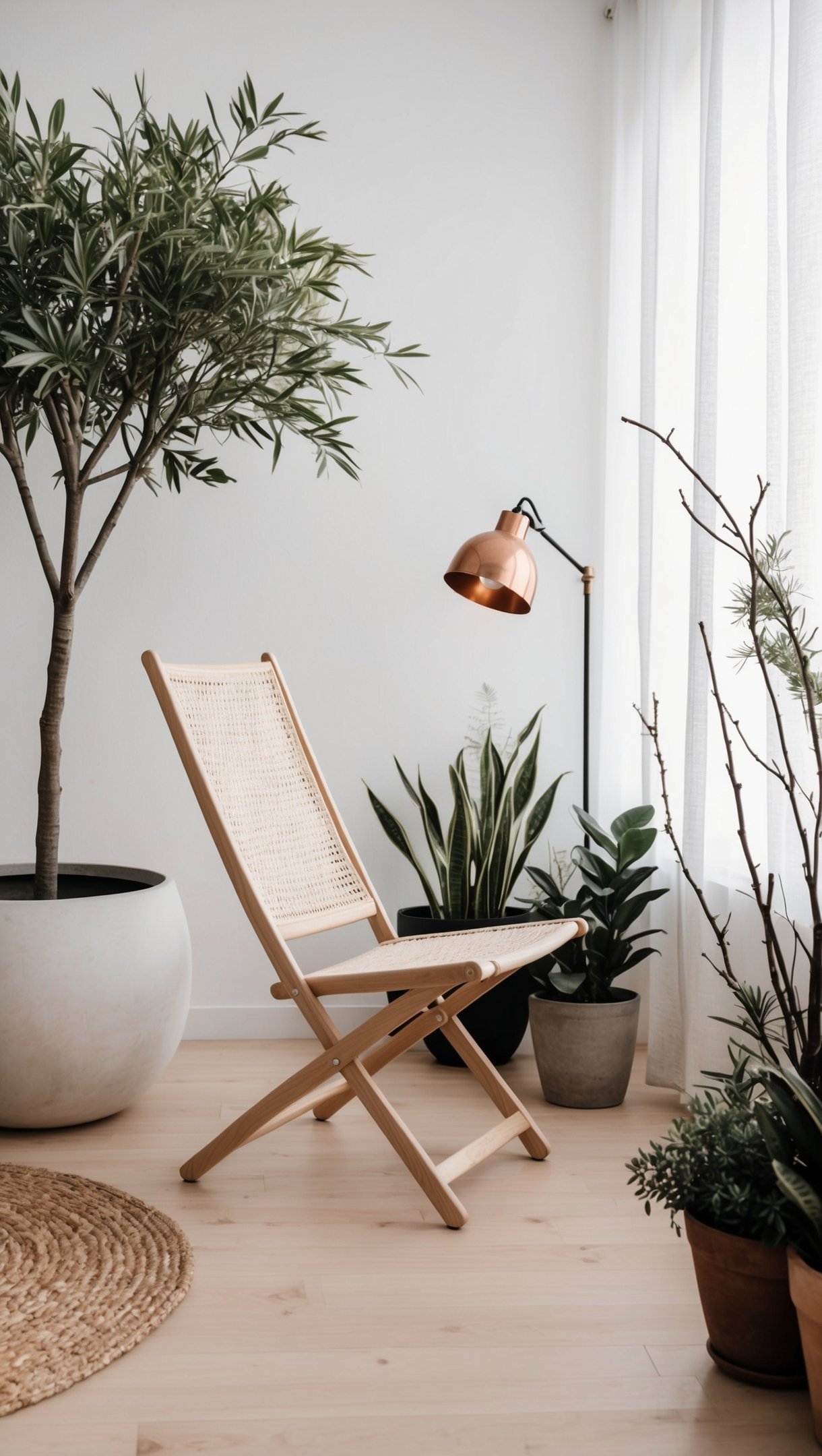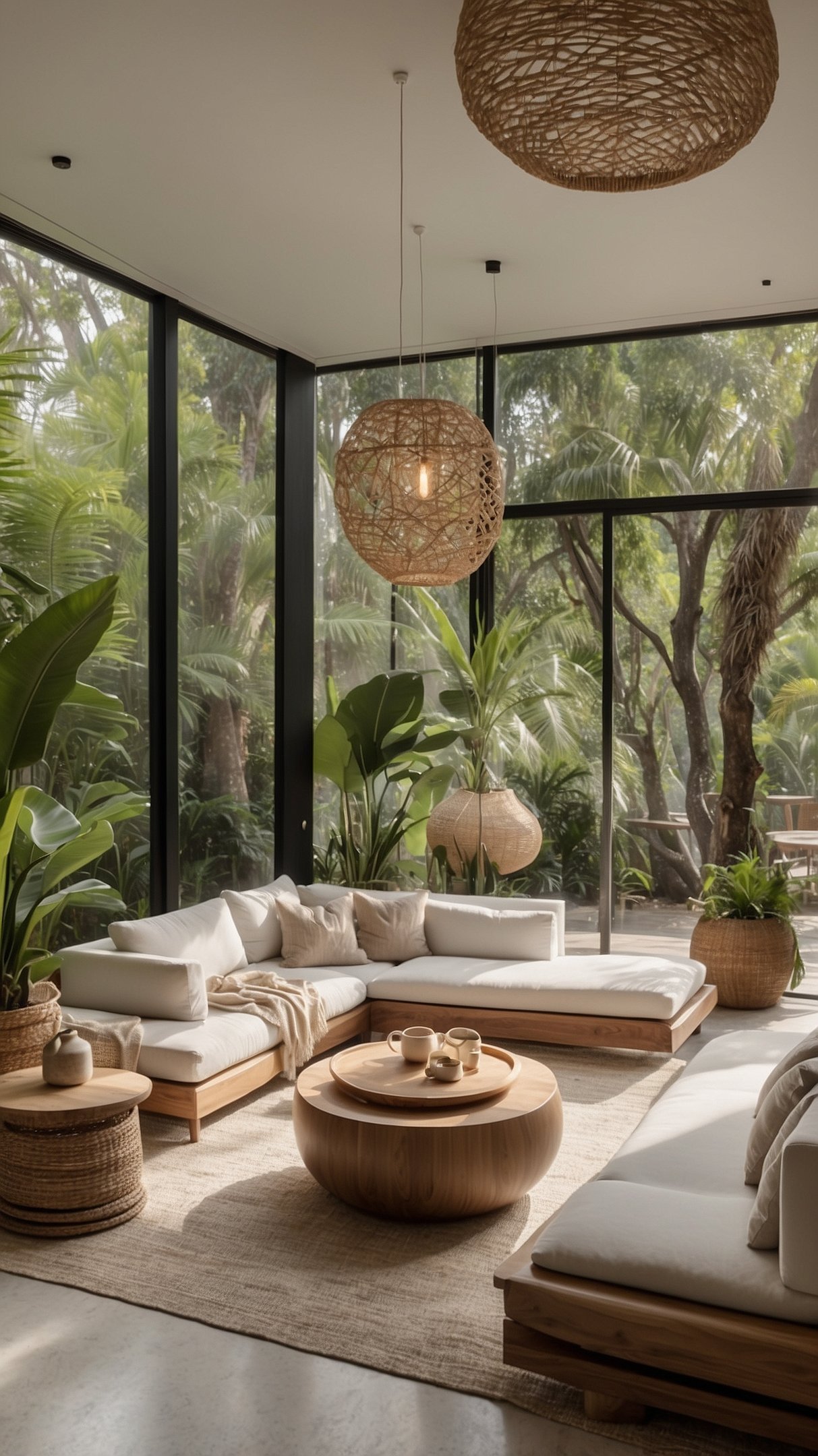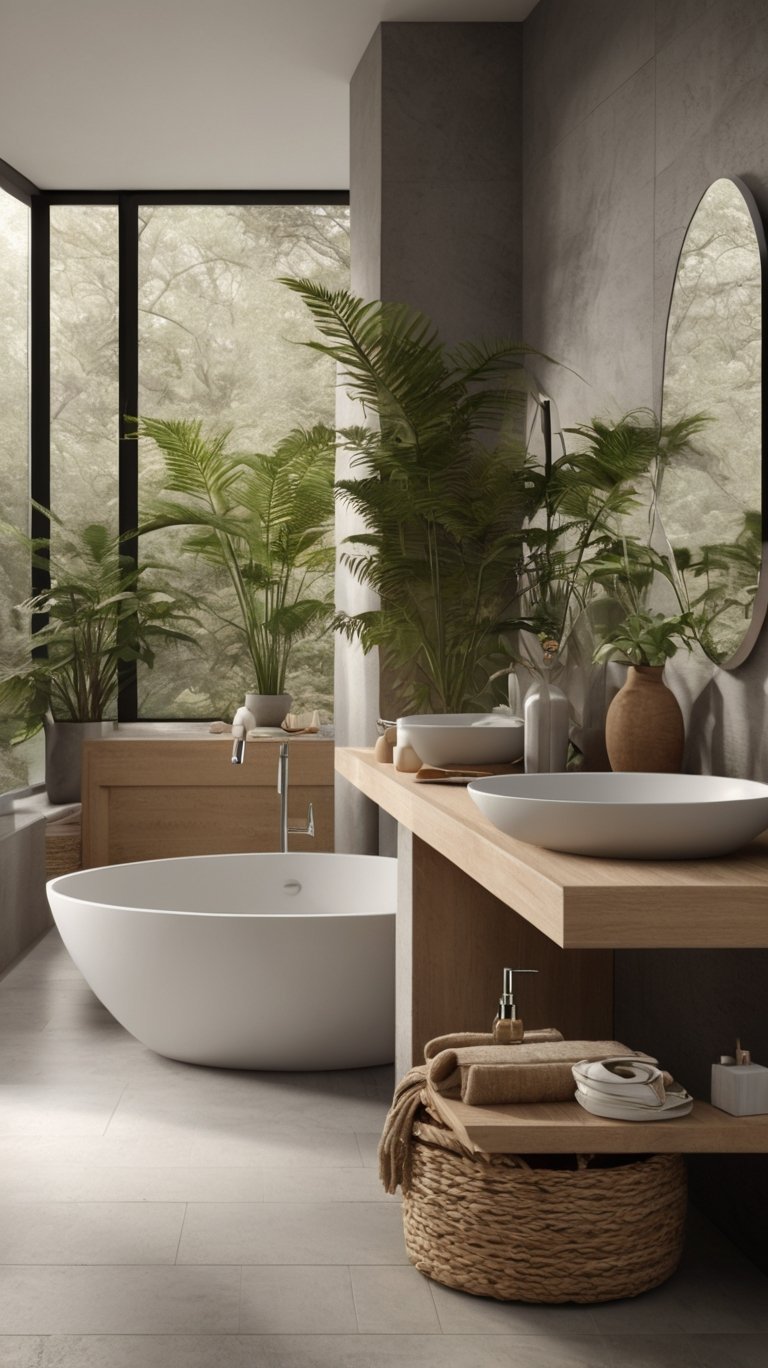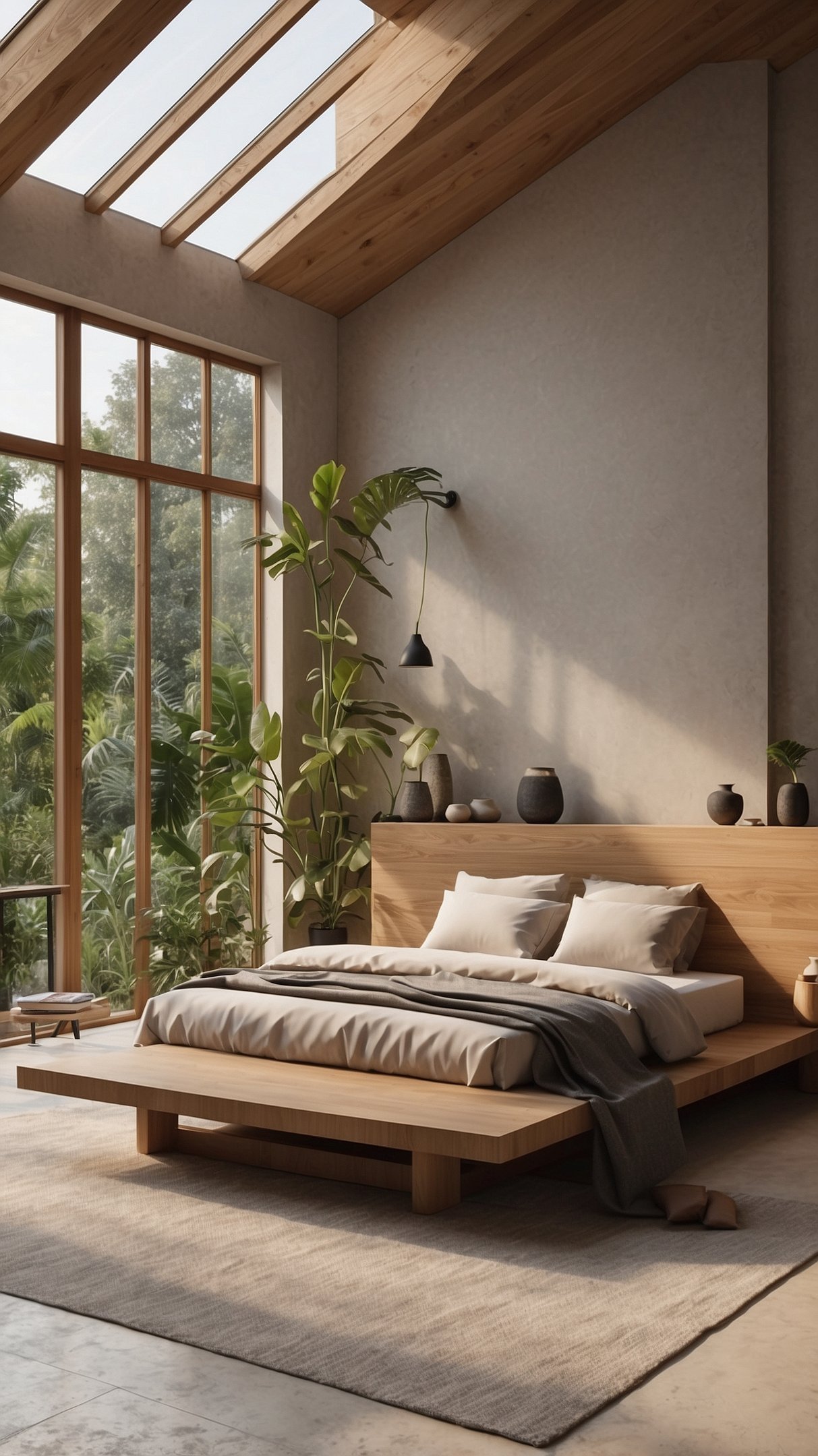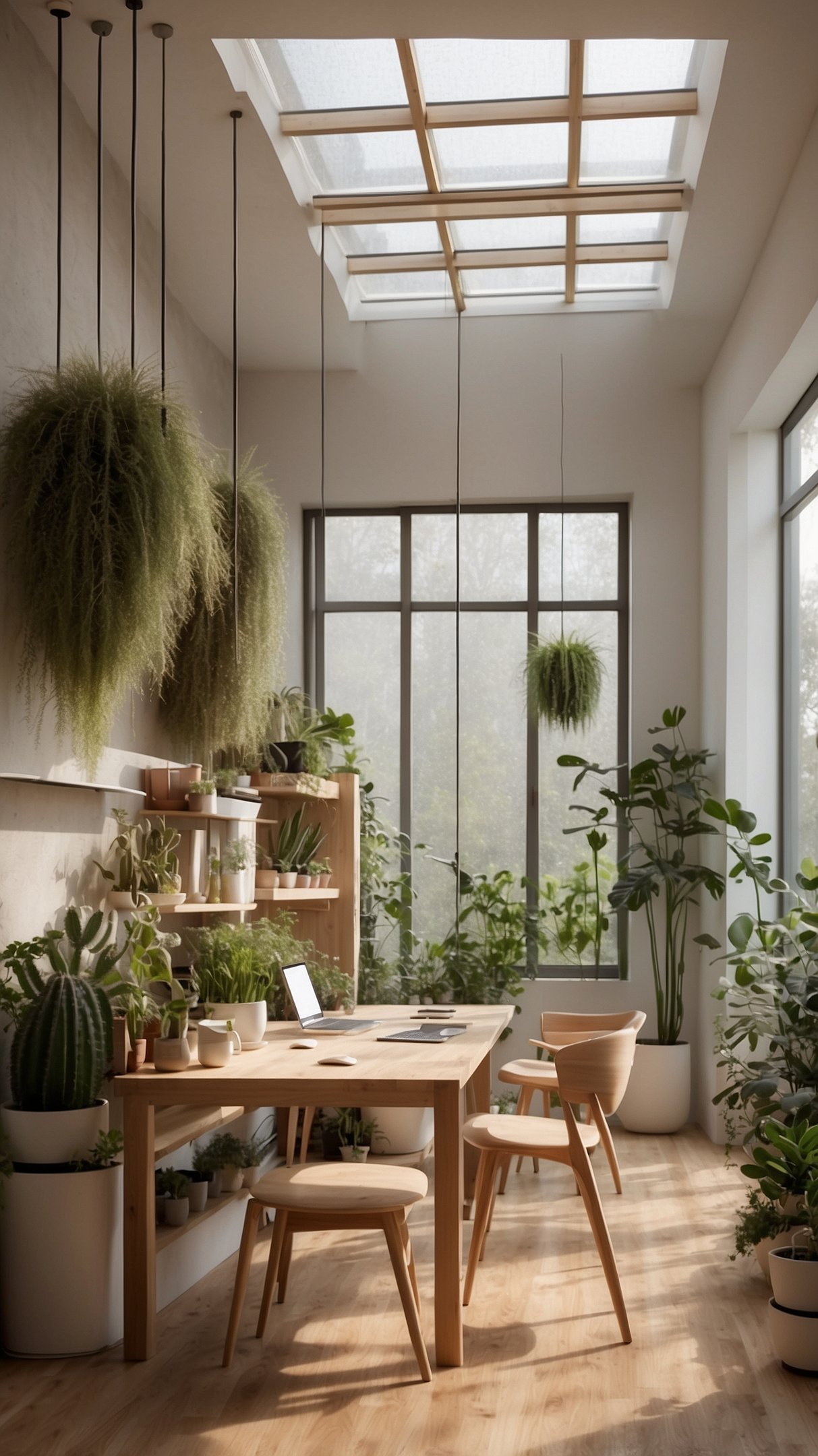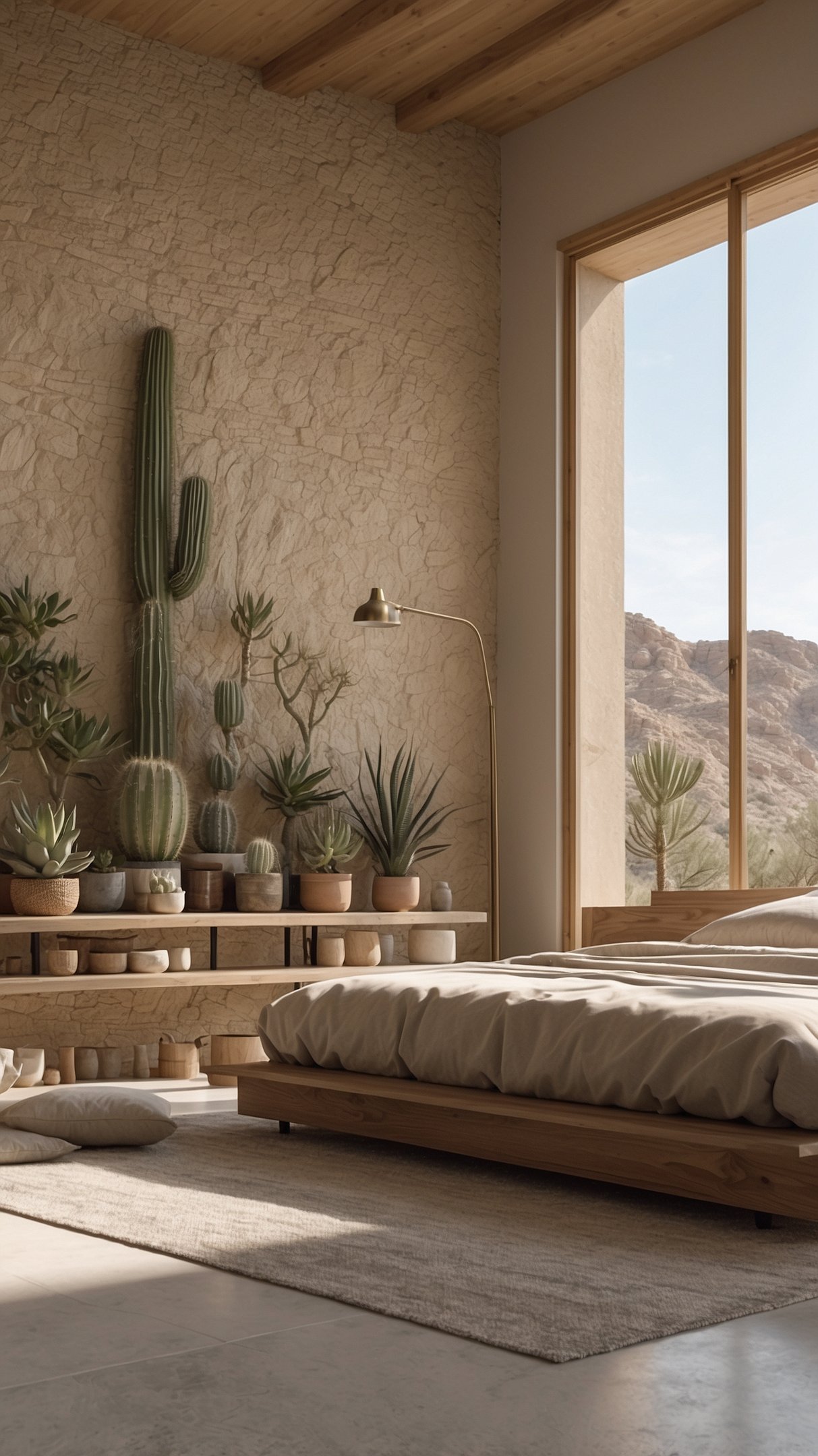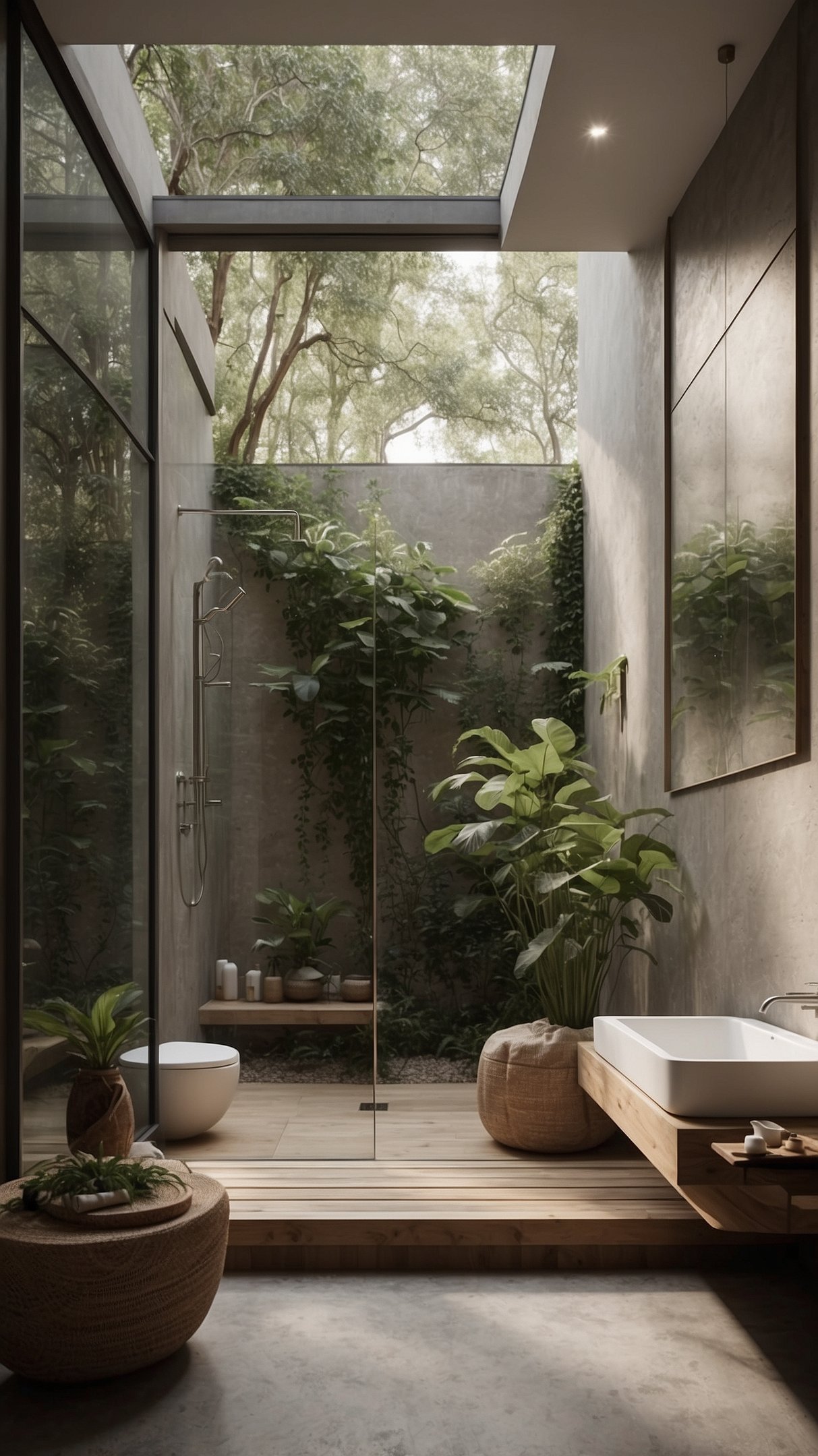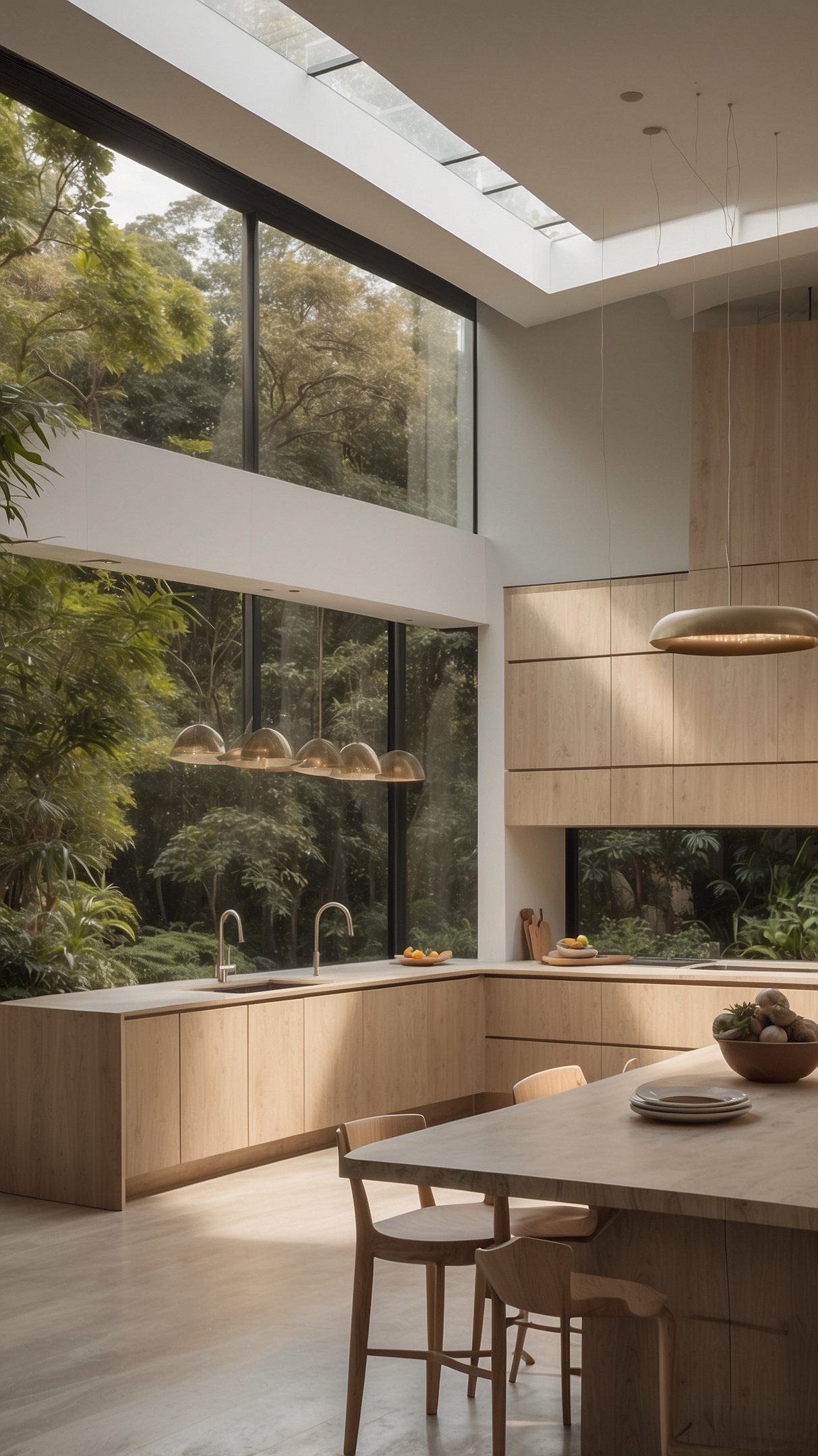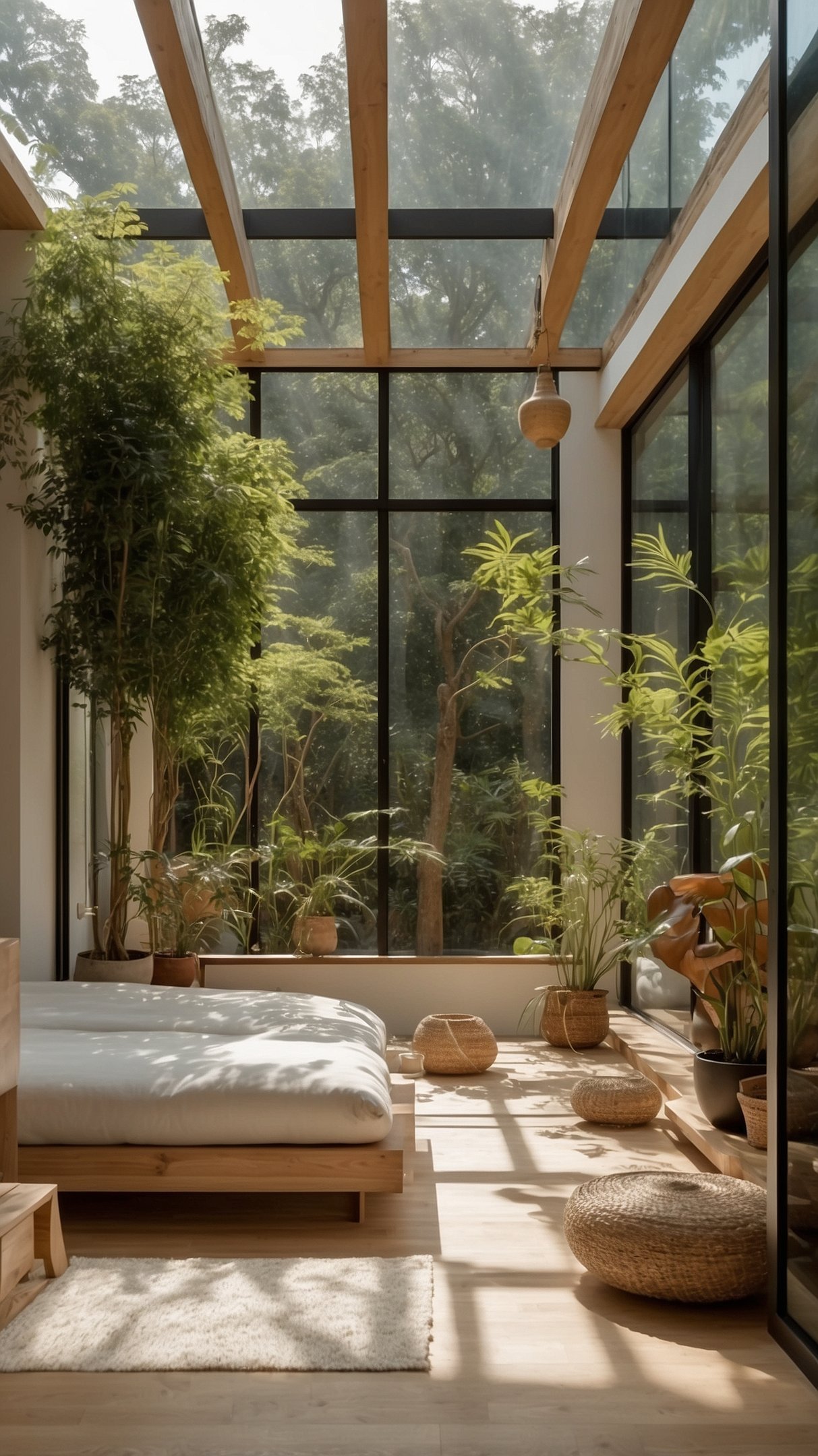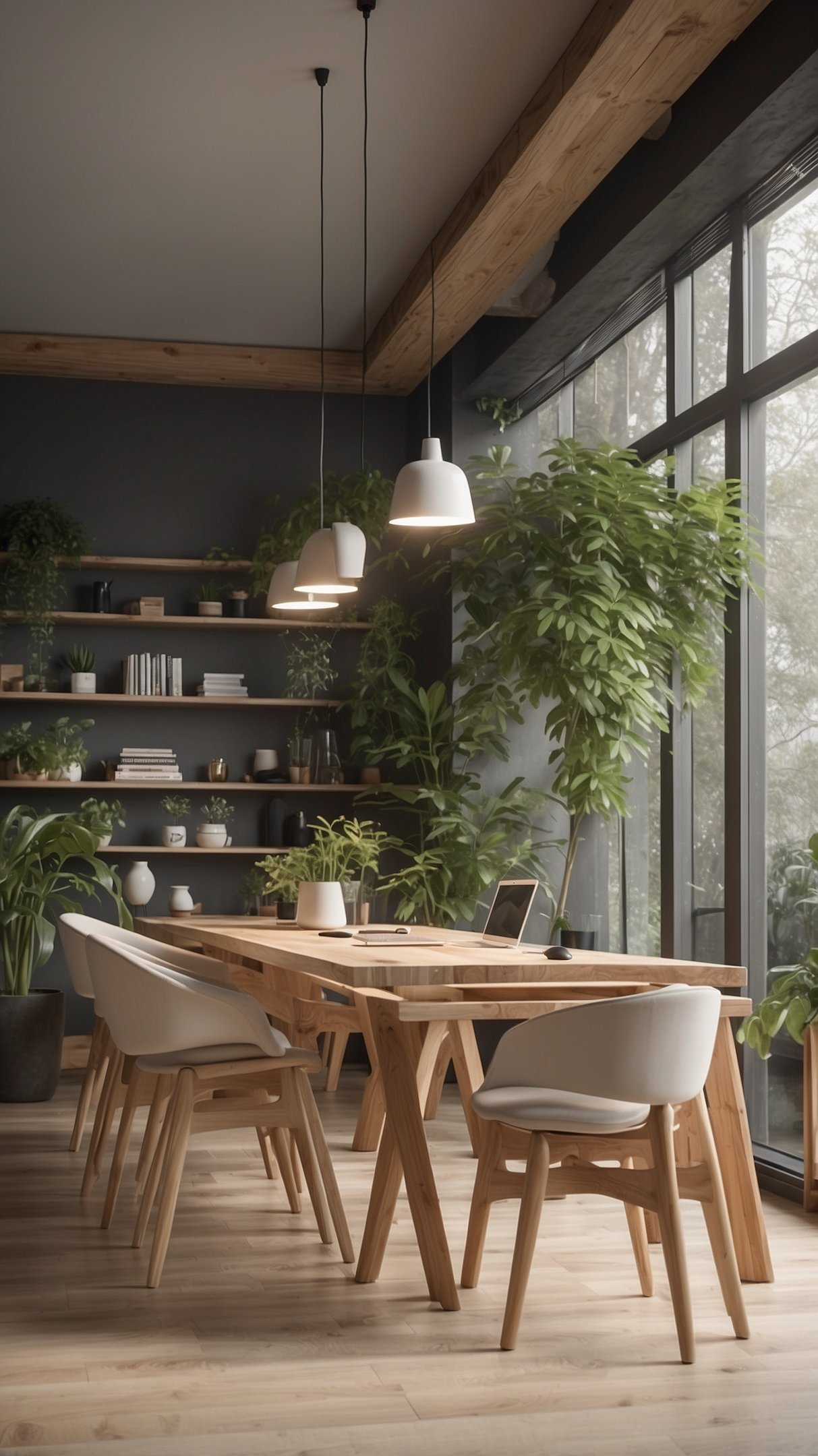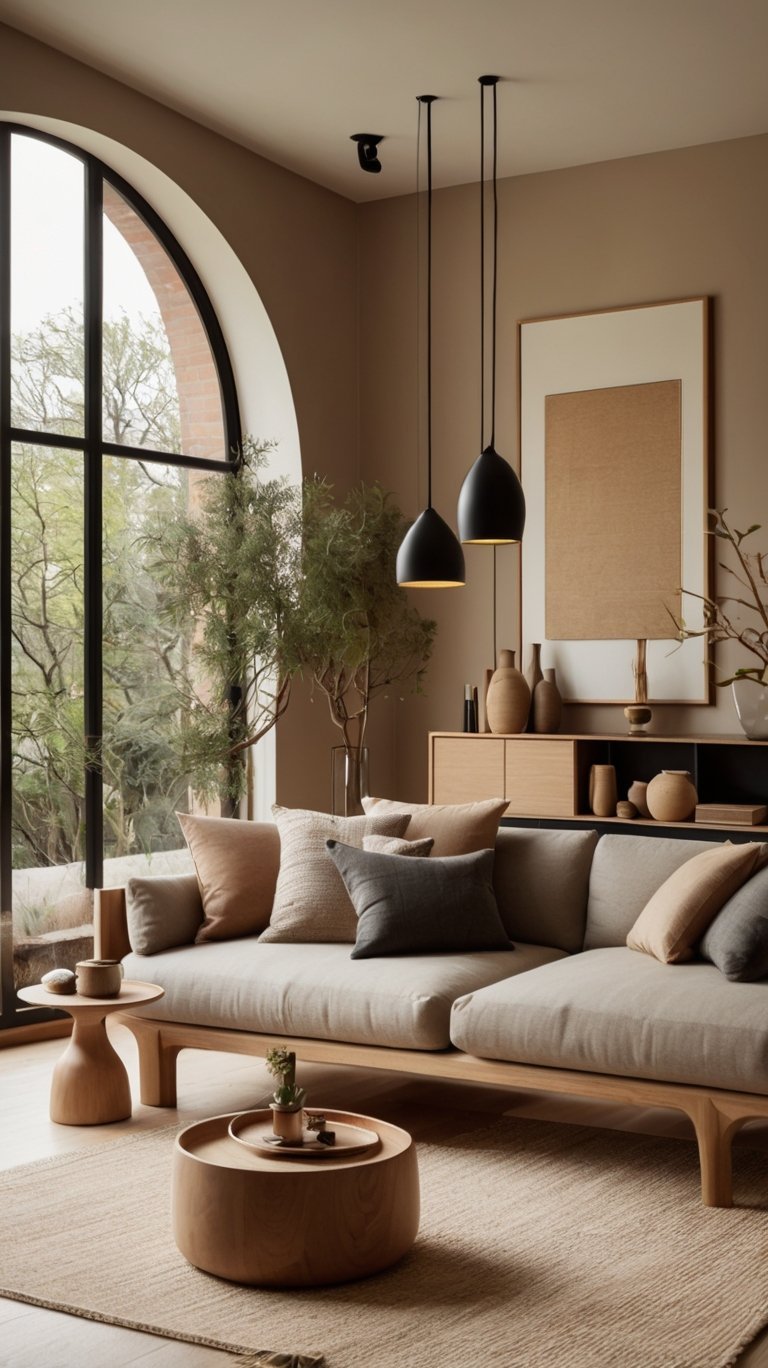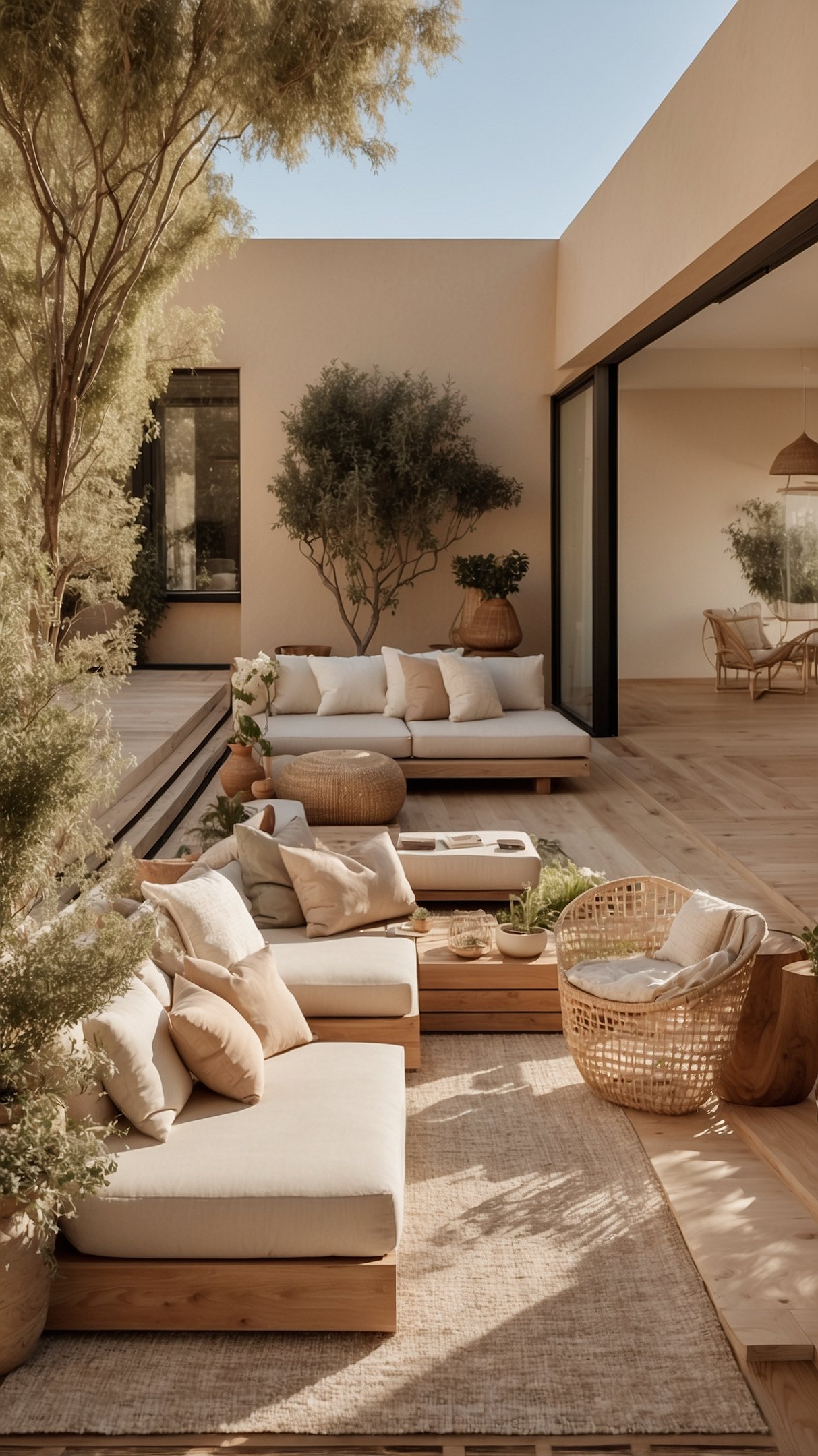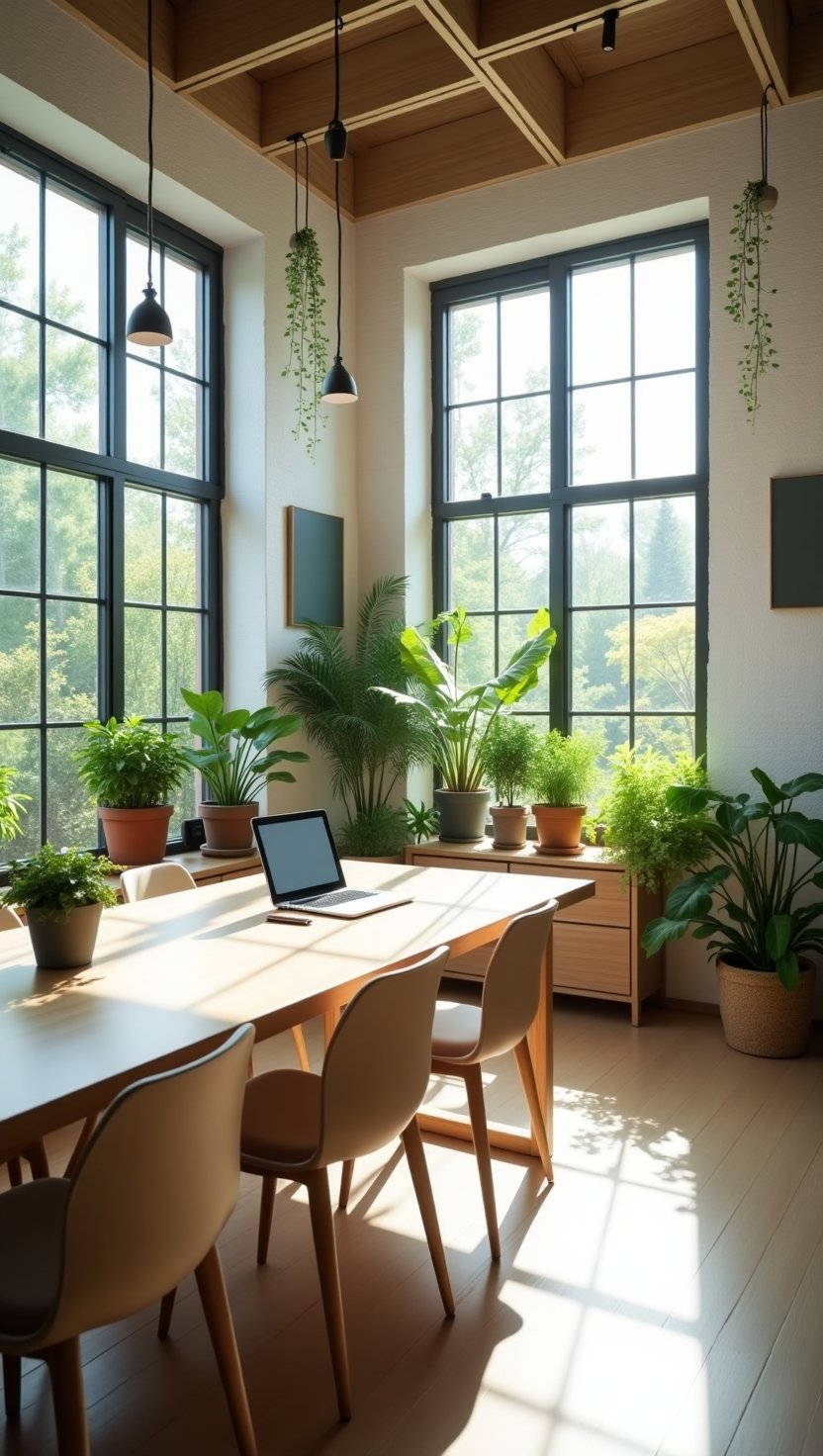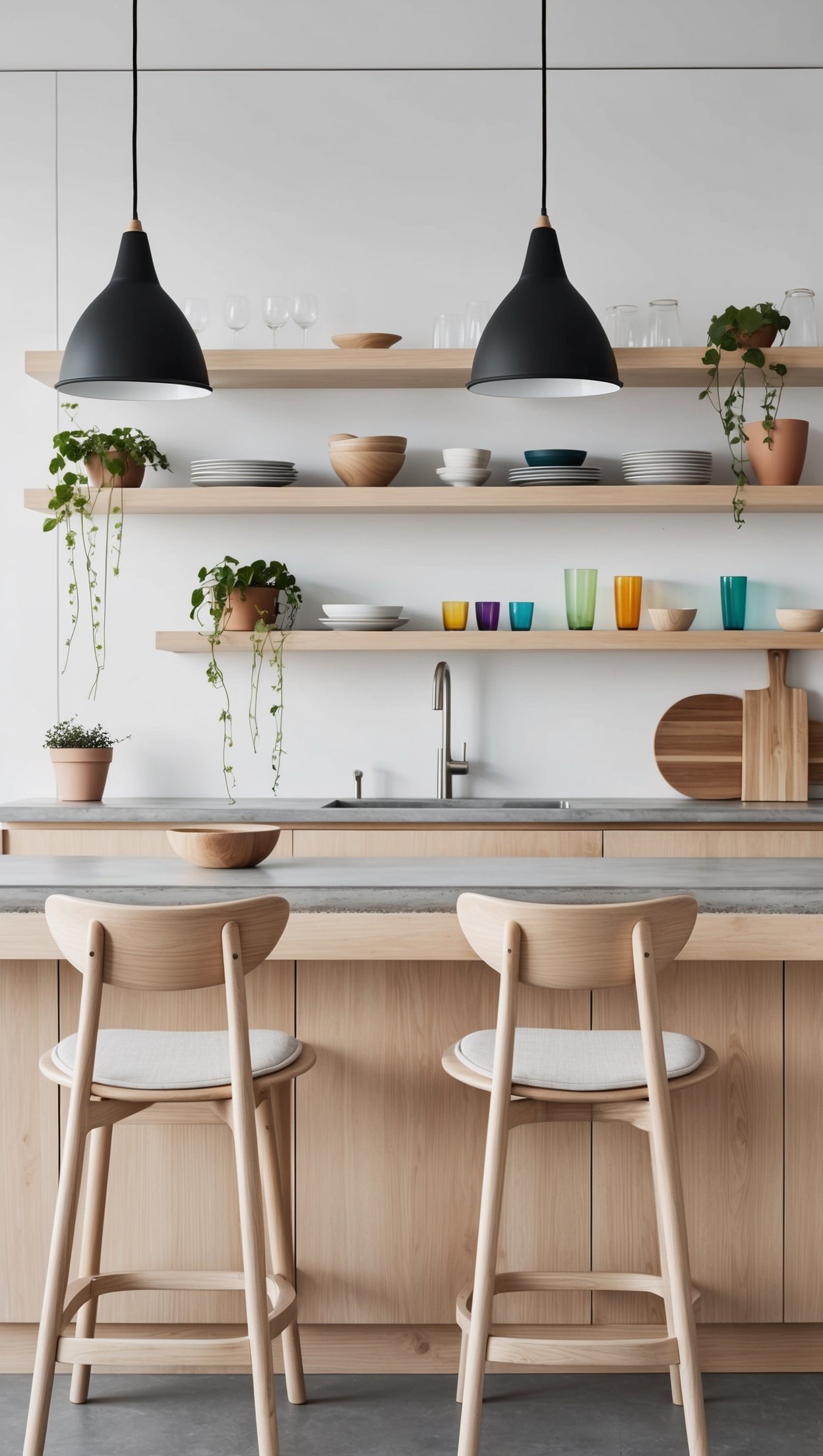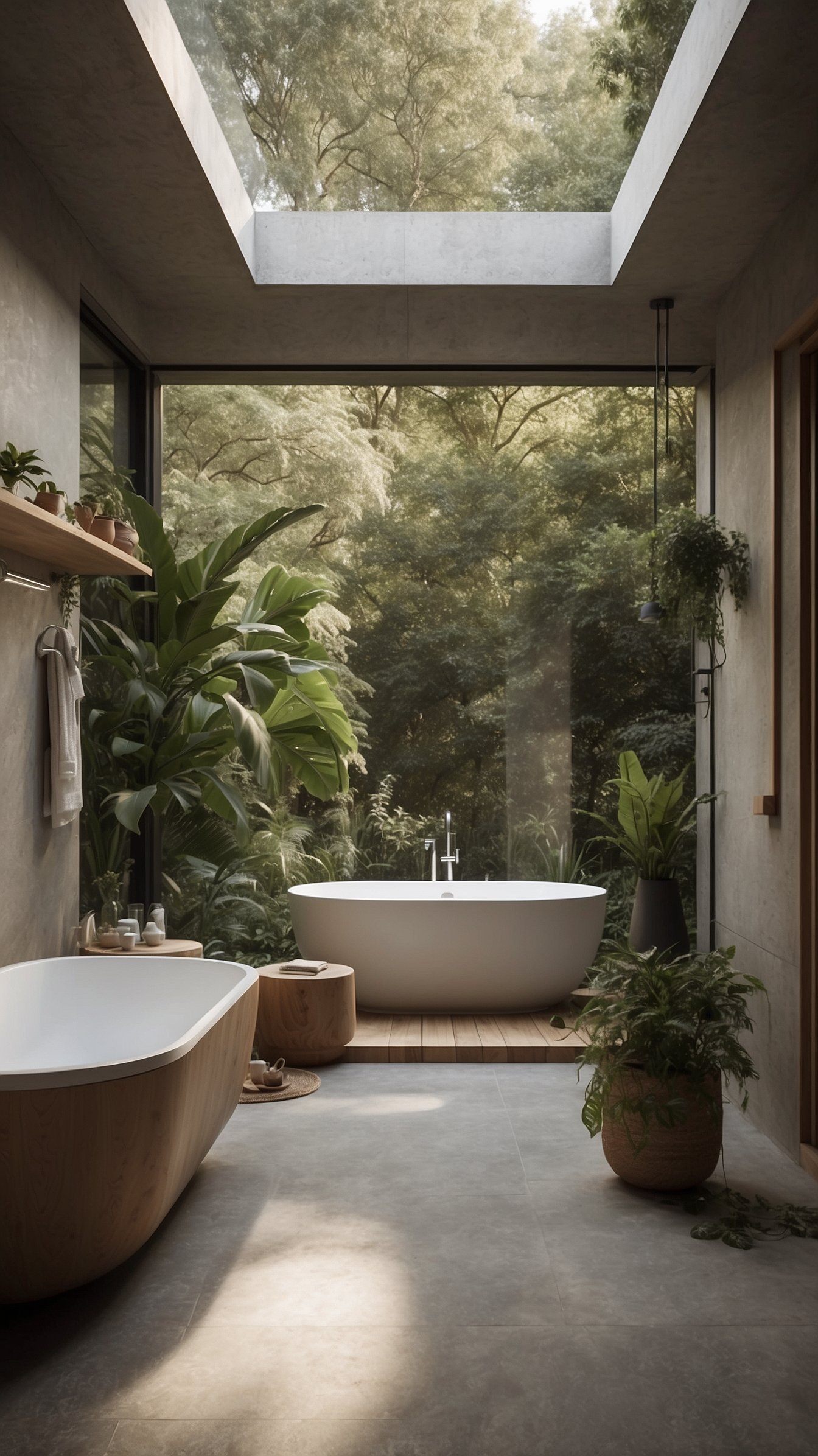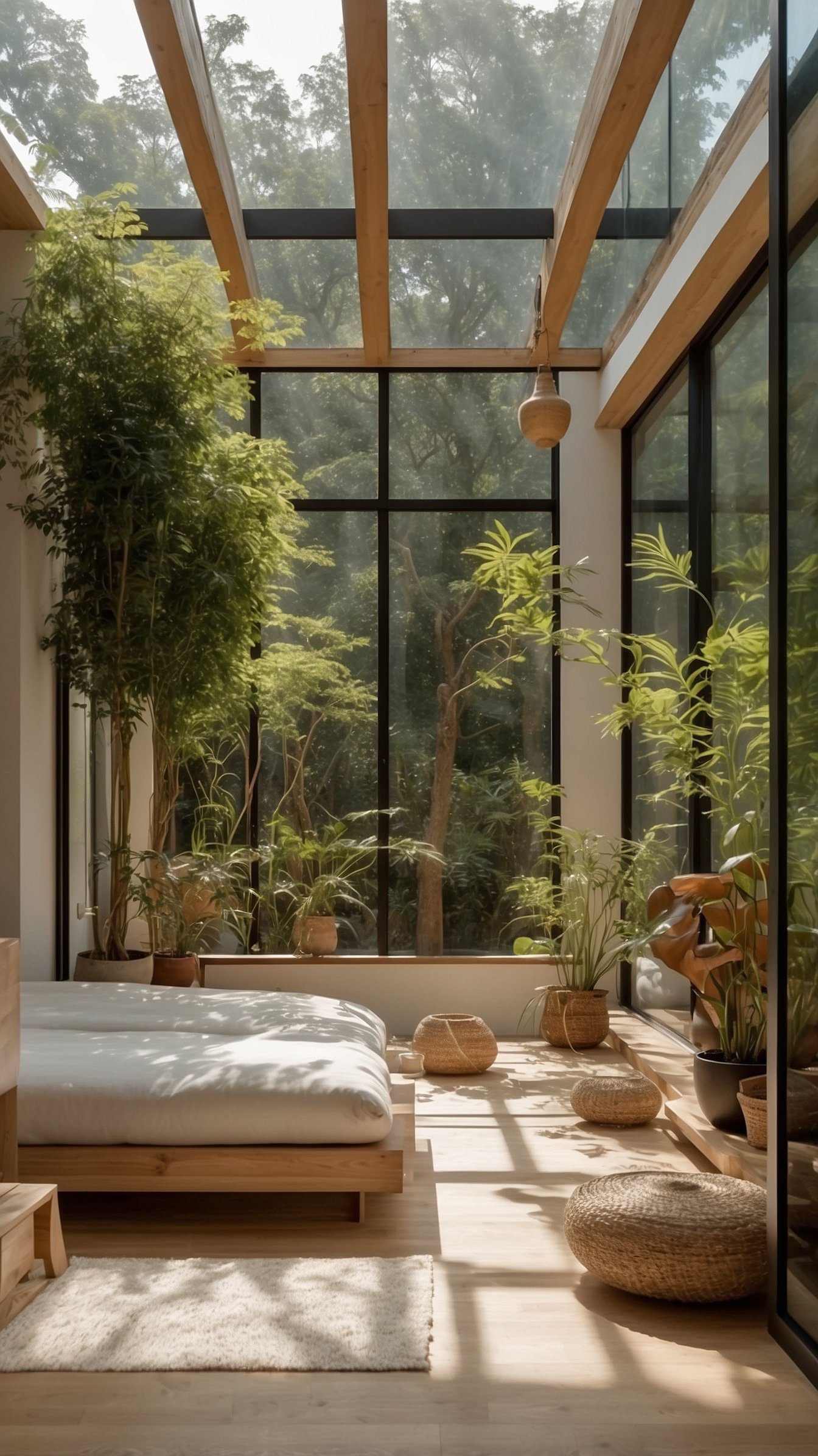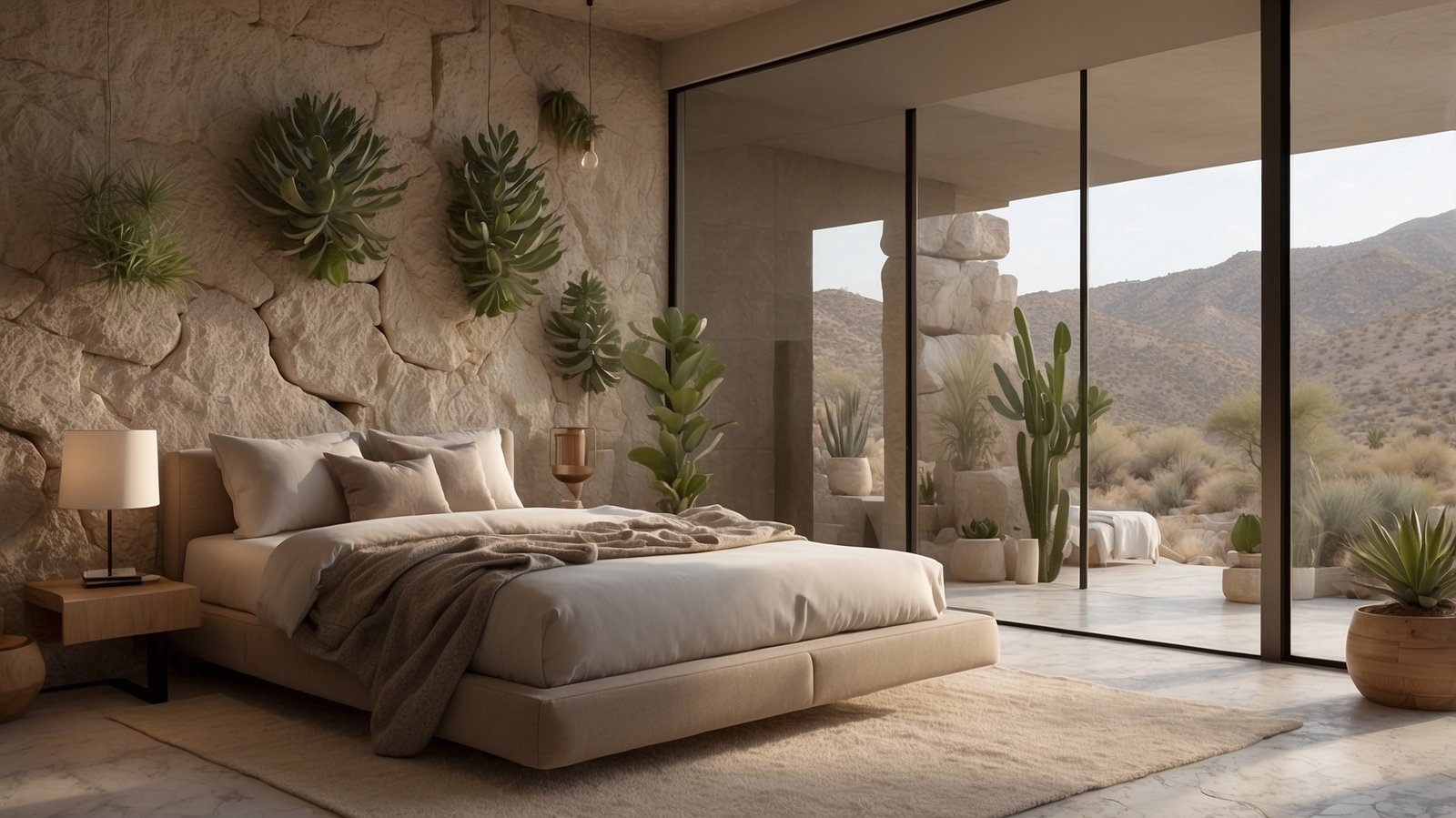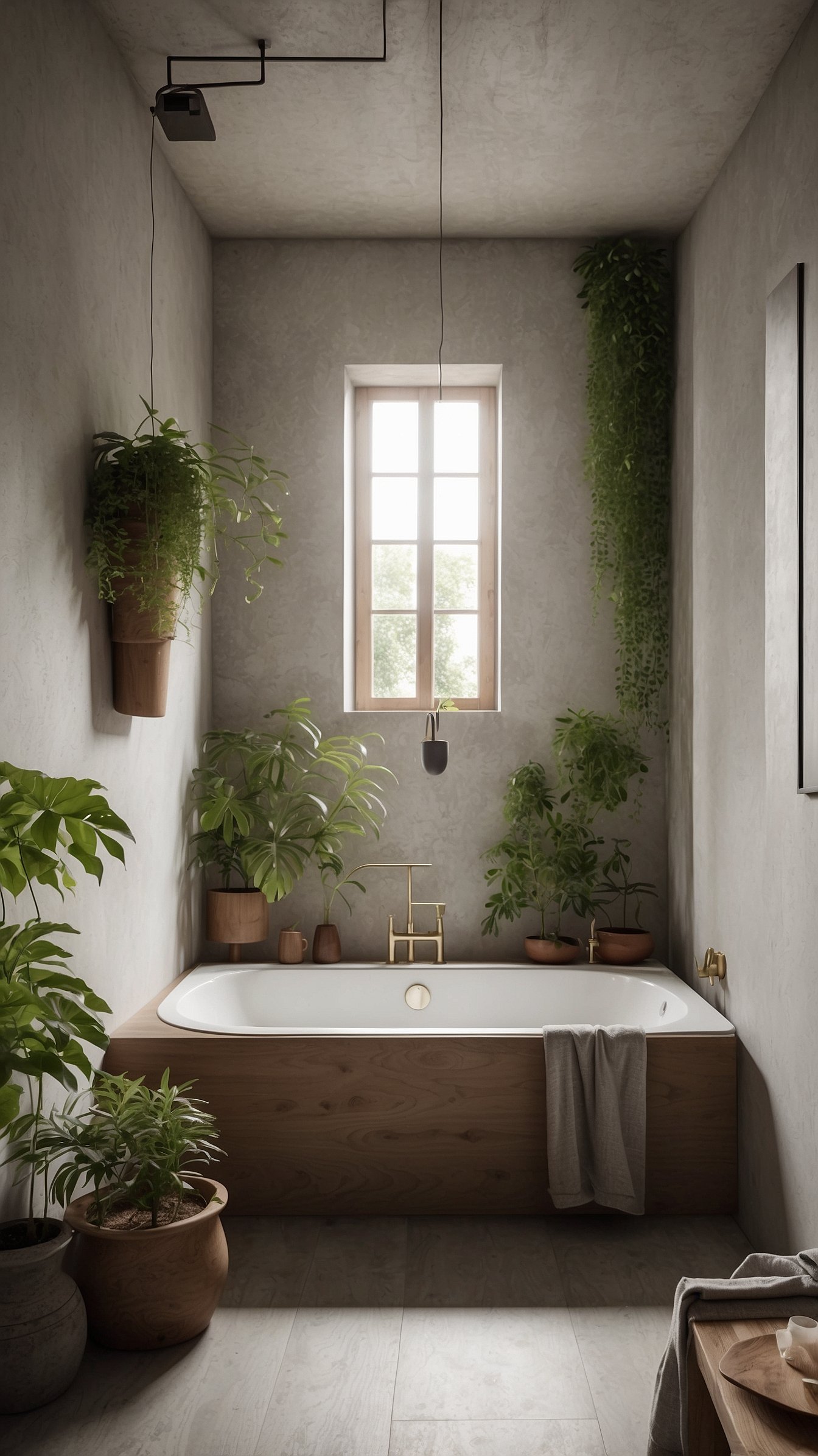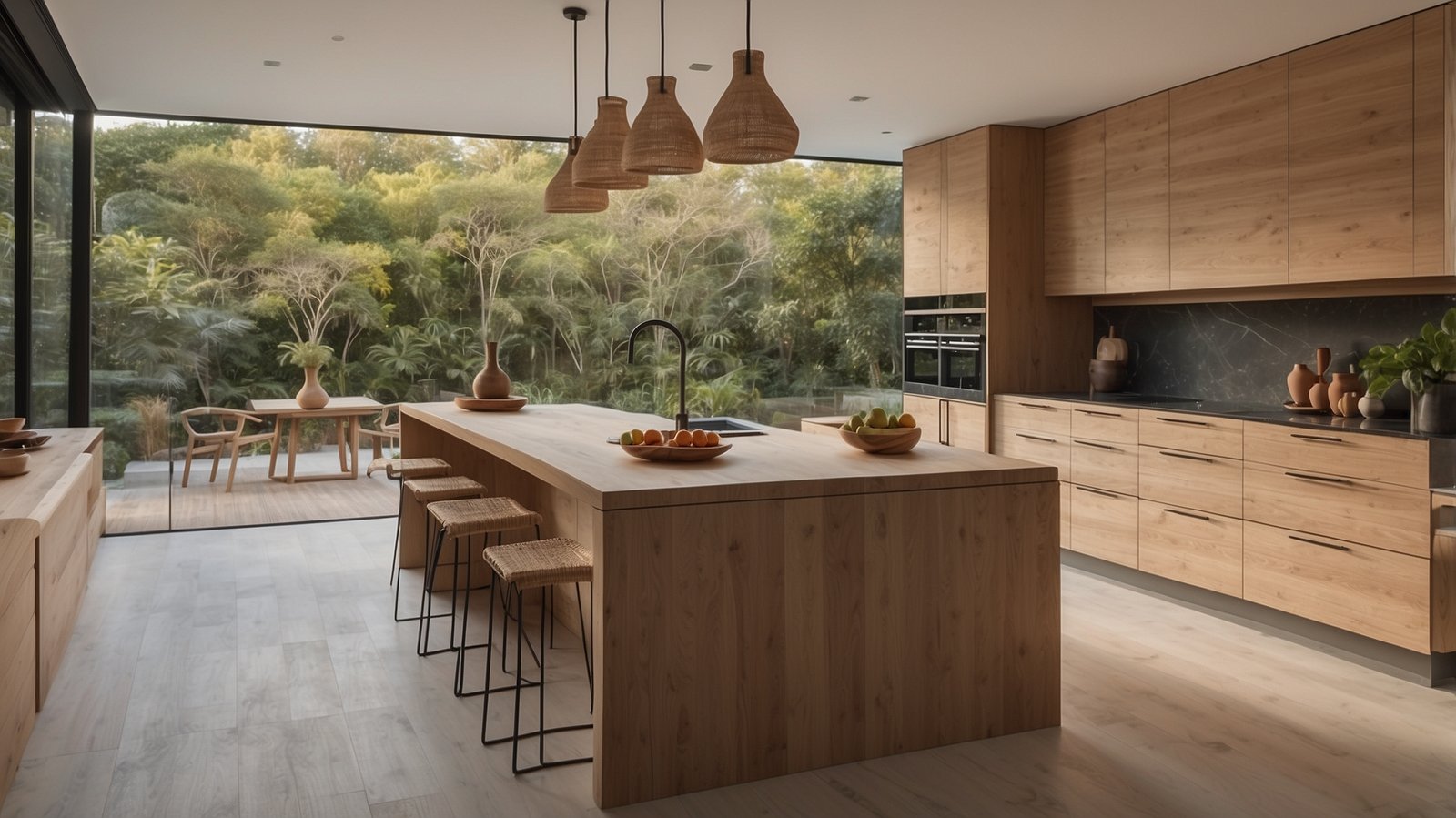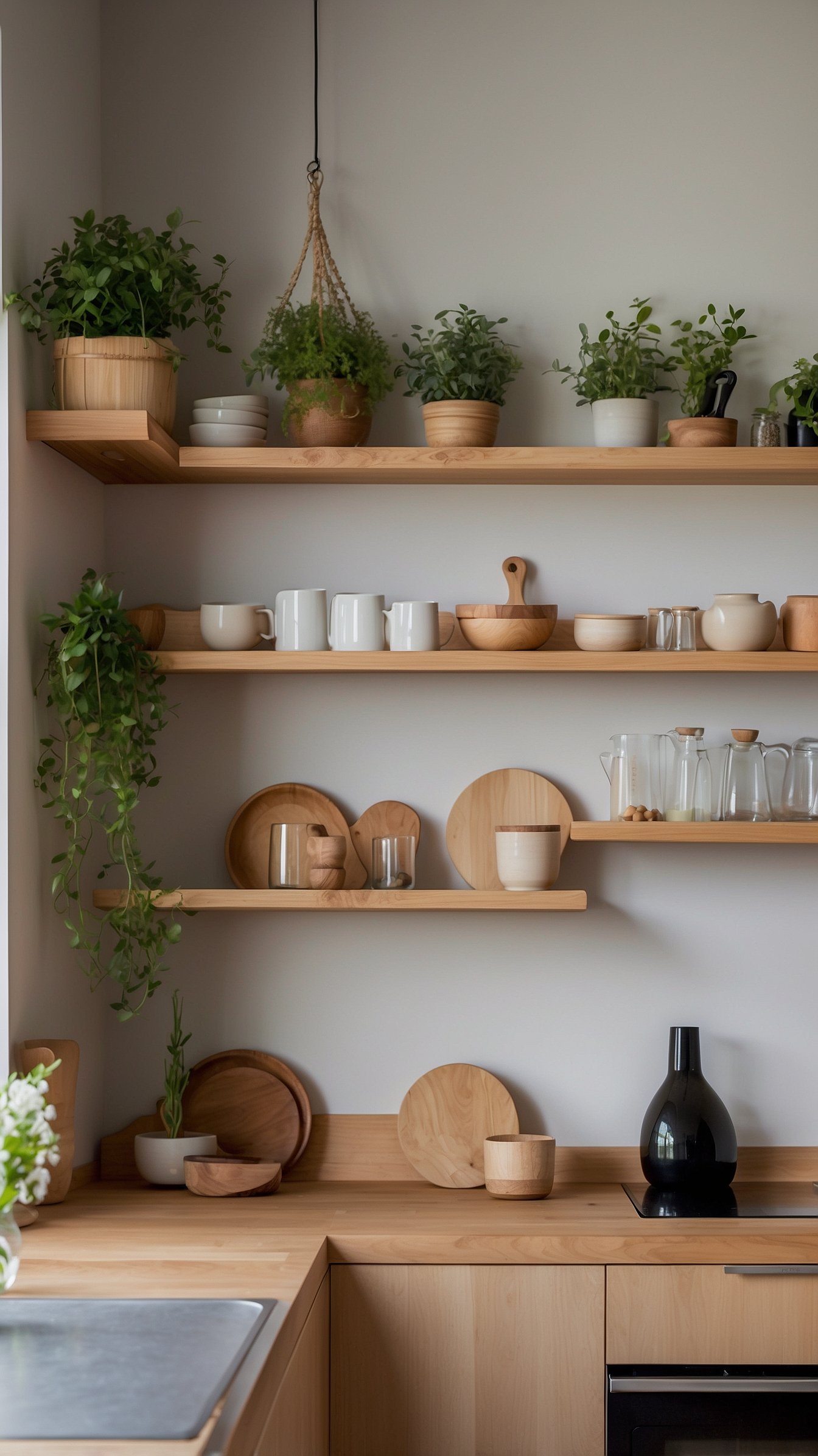Biophilic Design Trends Making 2025 a Houseplant Haven : Serene and Natural
Biophilic design trends show how bringing nature into your home can help you feel calmer—like walking into a garden or a quiet forest. Biophilic design isn’t just about sticking a few plants on a shelf; it’s about making your space feel connected to the outdoors so you feel happier and more relaxed. Ready to join the green movement? Let’s get started! Let’s dive in!

What Exactly is Biophilia Design?
Biophilia, derived from the Greek words “bios” (life) and “philia” (love), refers to our innate affinity for nature. It’s based on the idea that humans have an innate connection to nature, and that incorporating natural light, plants, textures, and patterns can improve our physical and mental health. Think less sterile minimalism and more organic, flowing spaces that mimic the beauty and complexity of the natural world.
Why Biophilia Design Matters
Research shows that biophilic design can significantly impact our physical and mental health. Exposure to nature, even indirectly, can reduce stress, improve mood, boost creativity, and enhance cognitive function. By creating inviting and comfortable spaces, biophilia design fosters a sense of calm and wellness.
Alright, here’s the lowdown on why loading up your place with plants is seriously good for you, in easy-to-digest bullet points:
Plant Perks: Why Green is Good (Backed by Science!)

Stress Less: Plants are like chill pills for your home. Studies show they can seriously lower stress levels. Just being around them is calming!
Air Purifiers, For Real: They suck up all sorts of nasty stuff floating around in your air. Think of them as tiny, green cleaning machines.
Boost Your Mood: Feeling down? Plants can help! They’ve been linked to improved mood and even reduced symptoms of depression.
Sharper Focus: Need to concentrate? Plants can boost your focus and productivity. Perfect for your home office!
Sleep Better: Some plants release calming scents that can help you drift off to sleep easier. Lavender, anyone?
Faster Healing: Studies have shown that patients with plants in their rooms actually heal faster. Who knew?
Natural Humidifiers: Dry air got you down? Plants release moisture, acting as natural humidifiers and keeping your skin happy.
Overall Well-being Boost: Basically, surrounding yourself with plants just makes you feel good. It’s a simple way to create a healthier and happier home!

WELL Building Institute: A 2022 report found that 84% of respondents believe biophilic design can enhance employee well-being.
Key Elements of Biophilic Design

So, how do you actually do biophilic design?
Here are some key elements to consider
Natural Light & Ventilation: Maximize natural light by using sheer curtains, skylights, and strategically placed mirrors. Ensure good ventilation to bring in fresh air.
Plants, Plants, Plants!: This is the most obvious one! Incorporate a variety of plants – hanging plants, potted plants, living walls – to bring life and vibrancy into your space.
Natural Materials: Opt for natural materials like wood, stone, bamboo, and cork for flooring, furniture, and décor.
Natural Patterns & Textures: Incorporate patterns and textures found in nature, such as wood grain, stone patterns, and woven fabrics.
Water Features: Consider adding a small water feature, like a fountain or aquarium, to create a calming and soothing atmosphere.
Views of Nature: If possible, arrange your furniture to maximize views of the outdoors. Even a small glimpse of greenery can make a big difference.
Earthy Colors: Use a color palette inspired by nature, such as greens, browns, blues, and grays.
Video of Biophilic Design Trends for 2025
Living Walls and Indoor Gardens
Bring the outdoors inside with vertical gardens and indoor herb gardens.
Natural Materials and Textures
Embrace the warmth of natural materials. Consider furniture crafted from wood, stone, bamboo, and woven textiles.
Organic Shapes and Forms
Incorporate furniture and decor with organic shapes inspired by nature, such as curved designs and biomorphic patterns.
Nature-Inspired Color Palettes
Use calming, earthy colors inspired by nature, such as greens, blues, and browns, to create a serene environment.
Sustainable Practices
Prioritize sustainable materials and practices to minimize environmental impact and strengthen your connection to the natural world.

My Top Tip: Use a jute rug under a light-colored sofa adorned with plush cushions to create a comfortable and stylish seating area.
Biophilic Design on a Budget

You don’t need to break the bank to embrace biophilic design!
Here are some budget-friendly ideas
Propagate Plants: Start new plants from cuttings of existing ones.
DIY Projects: Create your own natural décor using found objects like branches, stones, and shells.
Thrift Store Finds: Look for natural materials like wood and wicker at thrift stores.
Rearrange Your Furniture: Simply rearranging your furniture to maximize natural light and views can make a big difference.
Focus on One Area: Start with one room or area and gradually incorporate biophilic elements over time.

My Top Tip: Arrange white flowers in a decorative ceramic vase and place it on a shelf or coffee table for a stunning focal point that brightens up the room.
Biophilic Design by Room

Living Room
Add a large area rug made of natural fibers, incorporate plants, and use earthy colors for your furniture and décor.
Bedroom
Create a calming oasis with soft lighting, natural bedding, and plants that promote relaxation.
Kitchen
Incorporate herbs and edible plants, use wooden cutting boards and utensils, and maximize natural light.
Bathroom
Add plants that thrive in humid environments, use natural stone tiles, and incorporate a water feature.
Home Office
Boost productivity with plants, natural light, and a comfortable chair made of natural materials.
Common Mistakes to Avoid
Overdoing It: Too much of anything can be overwhelming. Strive for a balanced and harmonious space.
Ignoring Maintenance: Plants require care! Make sure you’re able to provide the necessary water, light, and nutrients.
Neglecting Natural Light: Maximize natural light and ventilation. Don’t block windows with heavy curtains.

Using Artificial Materials: Opt for natural materials whenever possible. Avoid plastic plants and synthetic fabrics.
Supporting Statistics

Google Trends Data: Interest in “biophilic design” has steadily increased over the past five years, with a notable spike in 2023.
Industry Reports: A 2023 report by Global Market Insights predicts the global biophilic design market will reach $3.14 billion by 2028, growing at a CAGR of 10.2% from 2023 to 2028.
WELL Building Institute: A 2022 report found that 84% of respondents believe biophilic design can enhance employee well-being.
CBRE Survey: A 2021 survey revealed that 75% of office occupiers are willing to pay a premium for biophilic design features.

Tip: Use a combination of heights and shapes in your shelf decor. For example, place a tall vase next to a stack of books to create visual interest without overwhelming the space.
FQA
What are the top biophilic design trends for 2025?
- Natural, layered greenery (potted groups, hanging plants, and living walls).
- Use of warm, natural materials—unfinished wood, stone, and tactile textiles.
- Increased emphasis on daylight, natural light-mimicking LEDs, and outdoor views where possible.
- Note: Trends favor ease of care—choose resilient plant species for indoor conditions.
How can I start adding biophilic design trends to my home on a budget?
- Focus on houseplants and grouped planters to create impact without major renovations.
- Swap fabrics and small decor for natural fibers (linen, jute) and earthen tones.
- DIY: upcycle simple wooden shelves or build a small planter rack for a living corner.
- Caveat: Prioritize proper light and watering—poor placement undermines the effect.
Which rooms benefit most from biophilic design trends?
- Living rooms and home offices gain the most—plants improve mood and perceived air quality.
- Bathrooms and kitchens also work well with humidity-loving plants and natural finishes.
- Tip: Even small spaces can use wall planters or single statement plants to add green.
Are biophilic design trends practical for renters?
- Yes—many elements are temporary and renter-friendly (potted plants, removable hooks, rugs).
- Use freestanding planters, portable grow lights, and non-permanent shelving to avoid damage.
- Note: Check lease rules for heavier installations like mounted living walls.
Do biophilic design trends have measurable benefits?
- Disclaimer: For health issues or therapeutic design, consult a qualified professional for personalized advice.
- Studies link indoor plants and natural elements to reduced stress, improved focus, and better wellbeing.
- Practical benefits include improved humidity balance and softer acoustics from plants and textiles.
Which indoor plants are best for low-light spaces?
- Choose shade-tolerant, low-maintenance species.
- Snake plant, ZZ plant, pothos, and cast iron plant.
- Rotate plants periodically to prevent one-sided growth.
How do I care for a living wall without constant maintenance?
- Pick hardy plants and install a simple irrigation or drip system.
- Use ferns, philodendrons, and peperomias with automated watering.
- Living walls still need occasional pruning and nutrient checks.
Can biophilic design trends work in urban apartments with limited outdoor access?
- Yes—use compact plants, grow lights, and reflective surfaces to amplify light.
- Wall planters, hanging pots, and large-leaf statement plants near windows.
- Choose plants suited to apartment humidity and temperature.
How do I prevent pests when adding more plants for biophilic design trends?
- Inspect new plants, quarantine before adding, and practice good hygiene.
- Wipe leaves, remove dead material, and use sticky traps or neem oil for infestations.
- Avoid overwatering—many pests thrive in damp conditions.
Which materials best support biophilic design trends for longevity?
- Opt for durable natural materials that age gracefully.
- Solid wood (oak, ash), untreated stone, linen textiles, and ceramic planters.
- Choose sealed finishes where needed in humid areas to prevent damage.
The Bottom Line
Embracing biophilic design is an investment in your well-being. By incorporating natural elements into your home, you can create a space that is not only beautiful but also promotes relaxation, reduces stress, and boosts your overall quality of life. So, open your windows, bring in the plants, and start creating your own natural sanctuary today!
Disclaimer: Prices and availability are subject to change. Links are affiliate-based and may provide a commission at no additional cost to you.
Inspiration Gallery
Discover Your Creative Spark: Browse My Inspiration Gallery for Project Ideas!

ABOUT the AUTHOR
TOKI; INTERIOR DESIGN & lifestyle CONTENT CREATOR.
Hey there! I’m Toki—the design-obsessed brain behind Dwell Studio 24. I’m a content creator passionate about interior design, photography, and creativity, living in a 77-year-old house with my husband and our awesome three kids. I write about interior design, furniture, home topics, and my lifestyle, including travel, recipes, skincare, and daily routines. I hope to inspire your next project and lifestyle!
ABOUT the AUTHOR
TOKI; INTERIOR DESIGN & lifestyle CONTENT CREATOR.

Hey there! I’m Toki—the design-obsessed brain behind Dwell Studio 24. I’m a content creator passionate about interior design, photography, and creativity, living in a 77-year-old house with my husband and our awesome three kids. I write about interior design, furniture, home topics, and my lifestyle, including travel, recipes, skincare, and daily routines. I hope to inspire your next project and lifestyle!
ABOUT the AUTHOR
TOKI; INTERIOR DESIGN & lifestyle CONTENT CREATOR.

Hey there! I’m Toki—the design-obsessed brain behind Dwell Studio 24. I write about interior design, furniture, home topics, and my lifestyle, including travel, recipes, skincare, and daily routines. I hope to inspire your next project and lifestyle!


